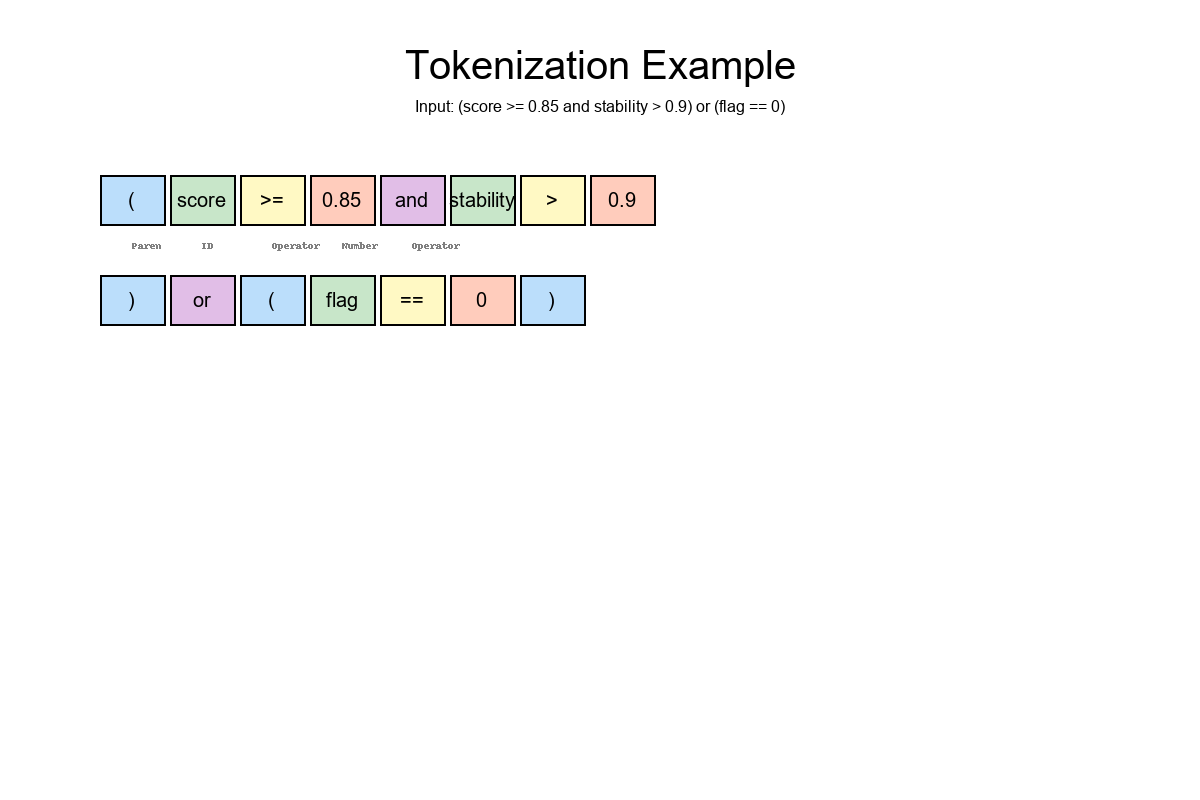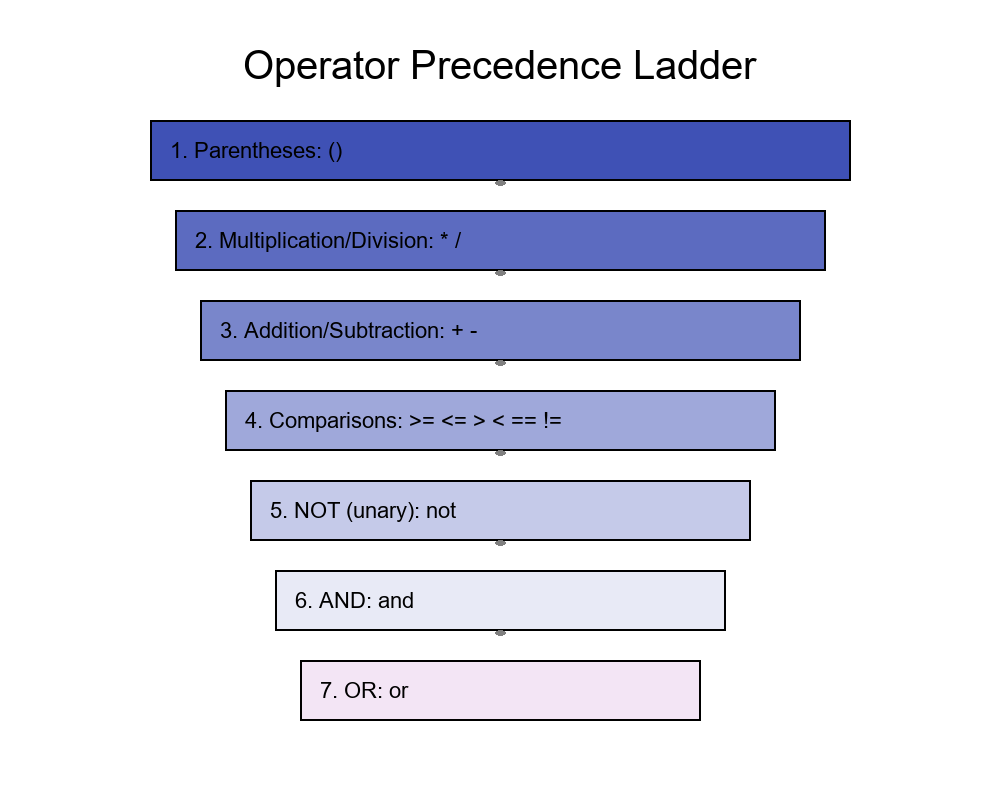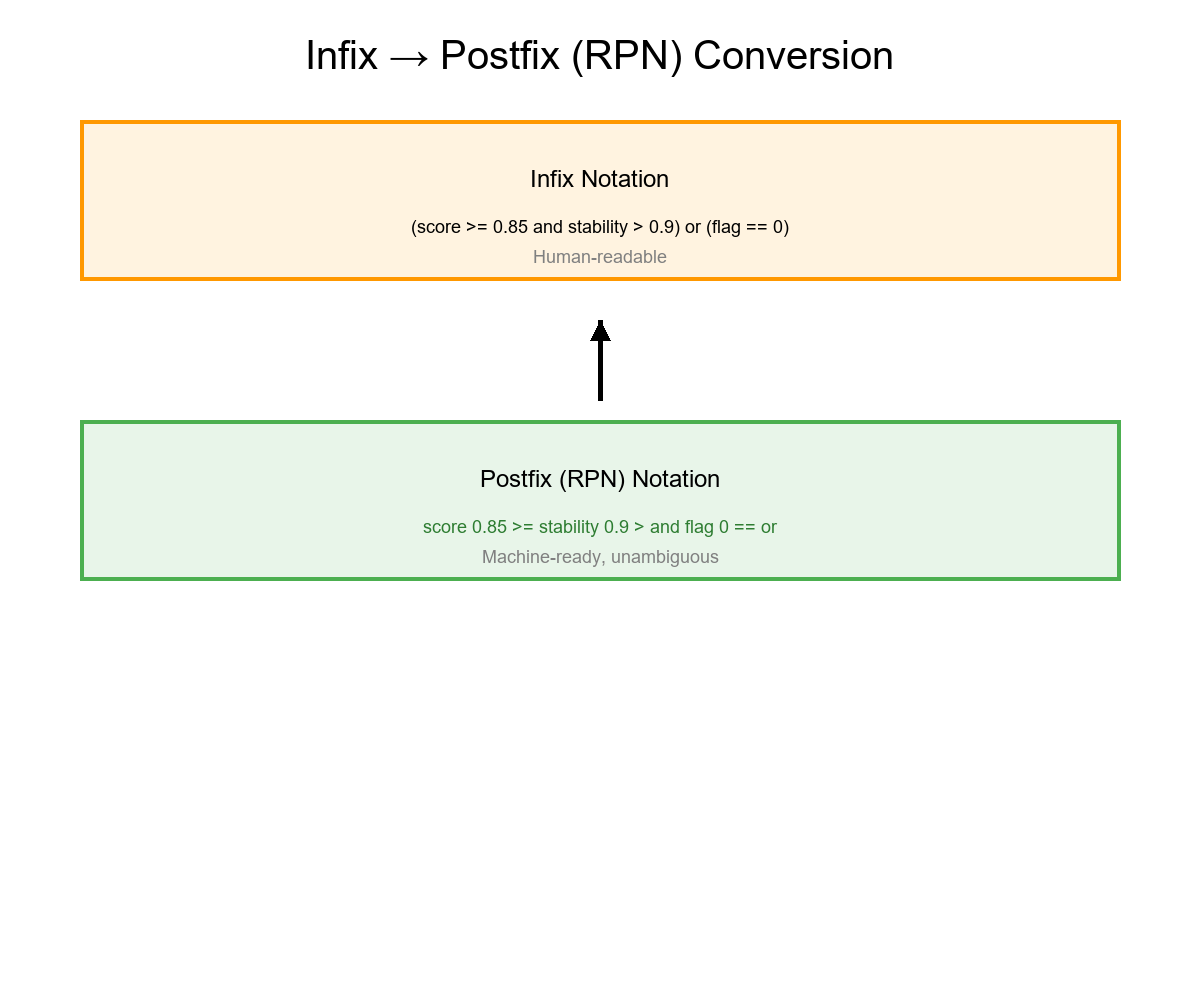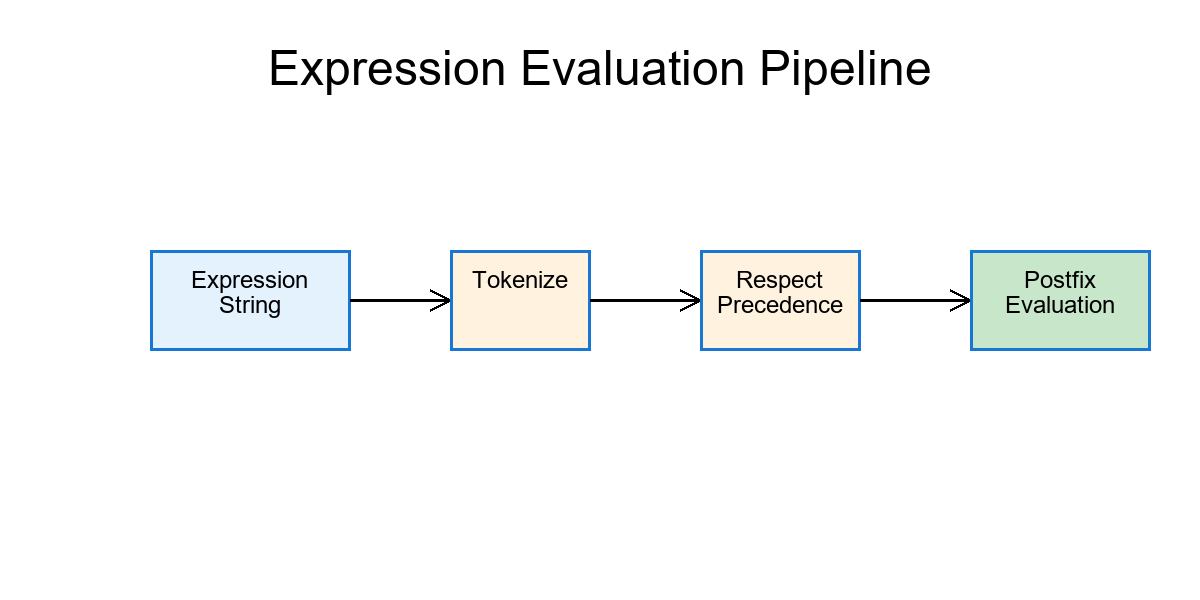Day 2 — Expressions as Algebra: Tokens, Precedence & Postfix (RPN) 🧮
Teaching computers to understand expressions! 🚀
🚀 The Big Idea
Humans read rules with ease. Computers need structure.
When we write something like 👇
score >= 0.85 and (stability > 0.9 or flag == 0)
…it looks natural to us but computers see a tangle of symbols. To evaluate this reliably, we teach machines three steps:
1️⃣ Tokenize – split text into meanings (words, numbers, operators).
2️⃣ Respect precedence – know which operators bind stronger.
3️⃣ Translate to postfix (RPN) – remove parentheses so evaluation is fast and unambiguous.
✨ This gives us rules that are consistent, explainable, and lightning-fast to evaluate.
💡 Where This Appears in Data Science
⚙️ Rule-based labels & weak supervision – define labels from heuristics in a clear, reproducible way.
👥 Cohort & segment definitions – select groups like "(active and high_quality) or (new_user and opted_in)".
🧪 Data-quality & feature checks – guard pipelines with rules like "not null" or value ranges.
📈 Model monitoring & release criteria – e.g. "(precision ≥ X and recall ≥ Y) or (lift ≥ Z)".
🧱 Feature-engineering DSLs – describe derived features safely and consistently.
🧾 Governance & auditability – align rule text with its computation for traceable results.
⚡ Performance & scalability – postfix evaluation runs in O(n) with a tiny stack.
🪄 Step 1 — Tokenize the Rule
Let's start with:
(score >= 0.85 and stability > 0.9) or (flag == 0)
Break it into typed pieces:
🆔 IDs: score, stability, flag
🔢 Numbers: 0.85, 0.9, 0
⚙️ Operators: >=, >, ==, and, or
🧩 Parentheses: (, )
Token stream:
( score >= 0.85 and stability > 0.9 ) or ( flag == 0 )

📊 Step 2 — Operator Precedence 🎚️
A consistent order keeps rules predictable (high → low):
1️⃣ * /
2️⃣ + -
3️⃣ Comparisons: >= <= > < == !=
4️⃣ not (unary)
5️⃣ and
6️⃣ or
🪶 Parentheses always override everything. Among equals, evaluate left to right.

🔁 Step 3 — Infix → Postfix (RPN) 🚦
Using the shunting-yard algorithm:
- Send values straight to output 🟩
- Push operators on a stack 🗂️
- Pop higher/equal precedence ops before pushing a new one ↕️
- Handle parentheses to group logic
()🎯 - Pop everything left at the end 📤
✅ Our rule becomes:
score 0.85 >= stability 0.9 > and flag 0 == or
Same logic, zero ambiguity. Pure clarity.

Algorithms make it all work! 🧮
🧰 How to Evaluate Postfix
Use a simple stack:
1️⃣ Read left → right. 2️⃣ Push values onto stack. 3️⃣ When you see an operator, pop the needed inputs, apply it, and push the result. 4️⃣ Return the final value (1 for True, 0 for False).
🧮 AND/OR use Boolean logic on those 1s and 0s.
🧩 Worked Example 1 — Full Evaluation
Postfix:
score 0.85 >= stability 0.9 > and flag 0 == or
| Row | score | stability | flag | Result | Explanation | |-----|-------|-----------|------|--------|-------------| | A | 0.86 | 0.91 | 1 | ✅ True | 1 ∧ 1 ∨ 0 = 1 | | B | 0.86 | 0.70 | 0 | ✅ True | 1 ∧ 0 ∨ 1 = 1 | | C | 0.70 | 0.70 | 1 | ❌ False | 0 ∧ 0 ∨ 0 = 0 |
⚖️ Worked Example 2 — Why Precedence Matters
Without parentheses:
score >= 0.85 and stability > 0.9 or flag == 0
Standard ladder → still evaluates as:
(score >= 0.85 and stability > 0.9) or (flag == 0)
💥 Wrong precedence (e.g., "or" before "and") flips results entirely!
🎯 Always follow the ladder —or use explicit brackets.
🧮 Worked Example 3 — With Arithmetic
Infix:
(feature_x / feature_y > 2) and (z_score + bonus >= 3)
Postfix:
feature_x feature_y / 2 > z_score bonus + 3 >= and
| Row | feature_x | feature_y | z_score | bonus | Result | |-----|-----------|-----------|---------|-------|--------| | 1 | 10 | 4 | 2.1 | 1.0 | ✅ True | | 2 | 5 | 4 | 2.5 | 0.2 | ❌ False |
🧯 Tip: guard against division by zero in feature_y.
🚫 Worked Example 4 — Adding Unary not
Infix:
(not drift) and (quality >= 0.95 or coverage >= 0.98)
Postfix:
drift not quality 0.95 >= coverage 0.98 >= or and
| Row | drift | quality | coverage | Result | |-----|-------|---------|----------|--------| | 1 | 1 | 0.97 | 0.90 | ❌ False | | 2 | 0 | 0.93 | 0.99 | ✅ True |
🏁 What You Gain
✅ Consistency – same rule = same result everywhere.
🧠 Simplicity – easy to evaluate and debug.
⚡ Speed – O(n) evaluation with tiny memory footprint.
🔍 Clarity – no hidden precedence surprises.
🧭 Takeaway
Turning rule strings into tokens, honoring a clear precedence order, and evaluating postfix makes your logic solid, predictable, and explainable.
A small engineering habit that scales beautifully from data validation to full-blown rule engines 💪
Day 2 Complete! 🎉
This is Day 2 of my 30-day challenge documenting my Data Science journey at Oracle! Stay tuned for more insights and mathematical foundations of data science. 🚀

